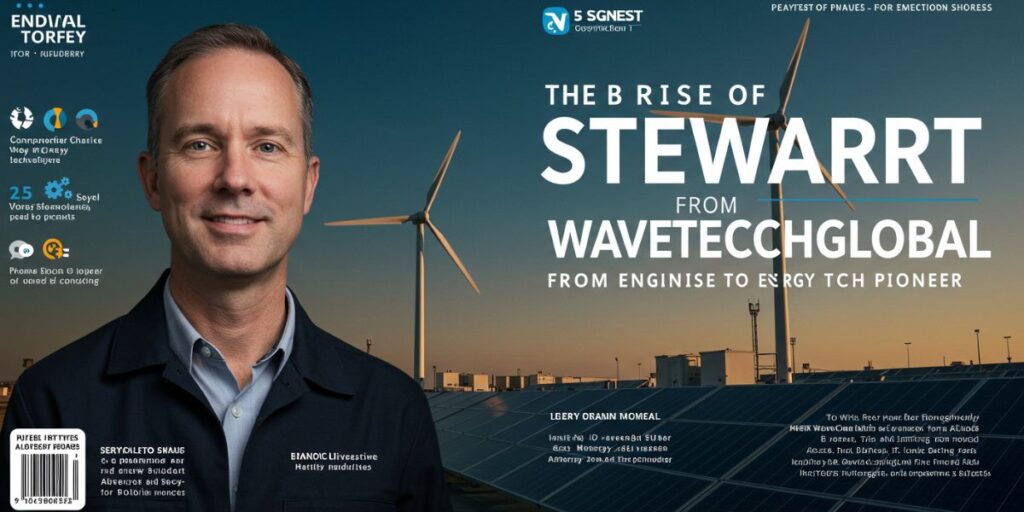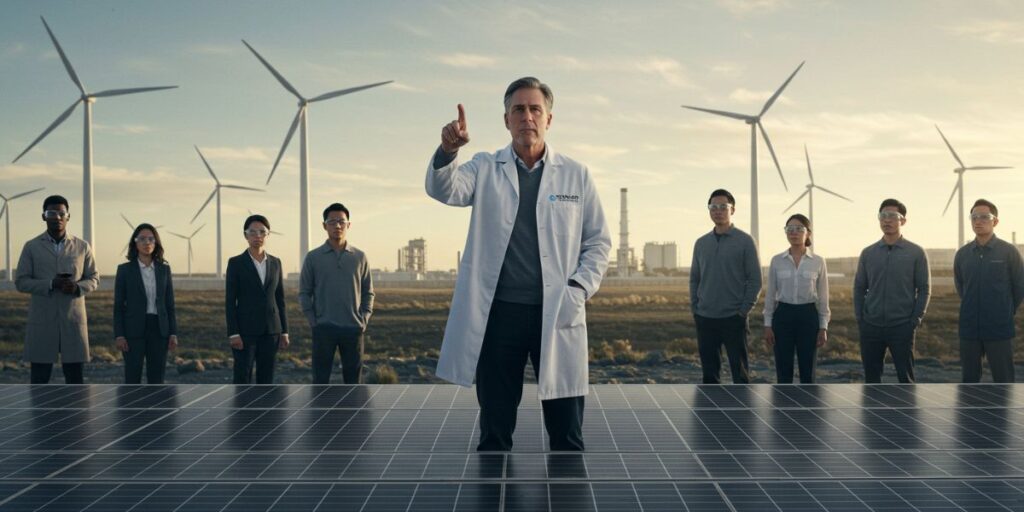
1. The Early Days: Stewart Before WaveTechGlobal

Before Stewart became the face of startup energy tech, he was just another kid obsessed with how things work. You know the type—disassembling remote controls, fiddling with broken toasters, always asking “why.” That curiosity didn’t fade. It sharpened. And eventually, it got a name: engineering.
Fresh out of MIT, Stewart’s early career wasn’t flashy. He wasn’t pitching to VCs or speaking at climate conferences. He was elbows-deep in circuit boards, doing the kind of grunt work that most people scroll past on LinkedIn. But ask anyone who worked with him back then, and they’ll tell you—he was wired differently (pun intended). While others clocked out, Stewart stayed behind sketching weird schematics on napkins and talking about “conductive resonance” over cafeteria fries.
It was during these quiet years—those unsung, trial-by-soldering-iron days—that Stewart developed a feel for energy systems that couldn’t really be taught. Textbooks gave him the theory. The workshop? That’s where the magic happened.
2. 2016–2018: From “Hmm…” to “Hell Yeah”
Alright, let’s rewind to 2016. Imagine Stewart, then 28, watching his phone battery melt in the desert sun during a camping trip in Nevada. No signal. No power. No help. That trip—part misadventure, part epiphany—sparked a thought: what if energy didn’t need wires at all?
This wasn’t just about charging phones. It was about rewriting the rules. His idea? A tech stack that transmits power like Wi-Fi. No plugs. No sockets. Just clean energy… floating.
Sounds like science fiction, right? But Stewart didn’t waste time daydreaming. He built prototypes in his cramped garage using salvaged drone parts and modified Tesla coils (yeah, really). When neighbors complained about humming sounds at night, he took it as a good sign. That meant the prototype was doing something.
By 2018, his living room looked more like a mini lab—half lab coats, half chaos. Yet, those scrappy months defined WaveTechGlobal’s DNA: bold, restless, and maybe a little bit reckless.
3. 2019–2021: Building WaveTechGlobal
Here’s the thing about co-founding a company: it’s equal parts vision and survival. Stewart teamed up with his college friend Liana, a genius in thermal dynamics who could turn whiteboards into roadmaps.
They started pitching. Hard. Most investors raised an eyebrow—wireless energy wasn’t exactly an easy sell. “Sounds cool, but how does it work?” they’d ask. Stewart, in his hoodie and beat-up sneakers, would smile and say, “Let me show you.”
The MVP (minimum viable product) was a black box—literally. It pulsed out wireless power across short distances using adaptive frequency modulation. The first time it lit up a bulb from across the room without any physical contact, jaws dropped. You could feel the shift.
Funding followed, not in millions, but in confidence. Angel investors—mostly former engineers and energy wonks—threw in support because they saw what Stewart saw: potential. Not just for gadgets, but for powering entire off-grid communities.
4. 2022–2023: Breakthroughs, Buzz, and a Bit of Chaos
2022 was the year things got real. Stewart’s team unveiled their first working model at CES, and suddenly, “wireless energy breakthrough” wasn’t just clickbait—it was their headline.
The WaveNode device—a sleek, coffee-can-sized transmitter—could power devices in a 10-meter radius. Journalists swarmed their booth. Major publications called it “the Wi-Fi of energy.” Stewart hated that term, but hey, it stuck.
Then came the speaking gigs. SXSW. Web Summit. Even a cameo on a tech documentary streaming on Netflix. Stewart, ever the reluctant frontman, had to swap his hoodies for blazers. But his message stayed raw: “The grid’s outdated. We need energy that moves as freely as data.”
Behind the scenes, though, it was chaos. The tech needed refining. Some demos failed mid-pitch. But Stewart embraced the mess. “Every failure is a breadcrumb,” he once said. “Follow enough, and you find your way.”
5. 2024–2025: Stewart’s Role in Scaling Wireless Energy
Fast-forward to now, and WaveTechGlobal is no longer the underdog. It’s leading the pack. Stewart’s role? Less inventor, more strategist. And honestly, that shift wasn’t easy.
He’s now shaking hands in Tokyo, signing MoUs in Munich, and negotiating supply chain deals in São Paulo. But he still sneaks into the lab when no one’s looking.

2024 saw the company land a huge partnership with an African renewable startup, integrating WaveNode tech to power rural schools wirelessly. By early 2025, they’d expanded into Southeast Asia with a pilot project in the Philippines, lighting up fishing villages without ever laying a cable.
Think about that for a second. Energy—wireless, clean, and portable—being used to lift entire communities out of the dark. That’s not just tech; that’s impact.
6. Future Outlook: What Stewart Plans for 2030
So what’s next? Stewart’s eyes are on 2030, and his vision of the “future of wireless energy 2030” is wild—in a good way.
He’s pushing for zero-contact charging zones in public spaces: airports, parks, even stadiums. Imagine charging your EV or laptop just by being nearby. No cords. No outlets. Just ambient energy. It’s ambitious, but so was wireless internet once.
But he’s also talking about energy equity. His goal? Bring wireless power to 100 million people by 2030. Especially those who’ve been ignored by traditional infrastructure. The forgotten villages. The storm-prone islands. The remote schools that still use candles.
Sustainability is part of every conversation now. Stewart’s team is experimenting with biodegradable transmitters, solar integration, and AI-powered energy routing. Some of it sounds futuristic, but with Stewart, the future tends to show up early.
7. Timeline Recap: Stewart’s Wireless Journey So Far
Just to connect the dots, here’s how it all played out:
- 2016 – That infamous desert camping trip sparks the wireless idea
- 2018 – Prototypes come alive (and neighbors start complaining)
- 2019 – WaveTechGlobal is born
- 2020 – MVP attracts first investors
- 2022 – CES debut, WaveNode shocks the tech scene
- 2023 – Stewart becomes the unexpected face of wireless energy
- 2024 – Global pilots begin, starting in Africa
- 2025 – Southeast Asia project brings energy to over 50,000 homes
Not bad for a guy who once charged drones in his garage.
8. Final Thoughts: A Reluctant Hero of the Energy World

Let’s be real—Stewart never set out to be a poster boy for energy tech. He didn’t dream of photo ops or keynote stages. He just hated wires.
But that quiet rebellion? It changed everything.
Now, he’s leading a movement—not with grand speeches, but with ground-breaking tech and a no-frills attitude. The kind of leader who doesn’t just talk about the future—he builds it, even if it’s messy, noisy, or uncertain.
And maybe that’s why people trust him. He’s not polished. He’s real. And in a world full of pitch decks and PR, that might just be the most powerful energy of all.